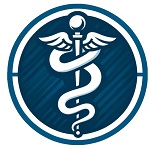Home » Nursing Diagnosis
Category Archives: Nursing Diagnosis
Nursing Care Plan for Gastrointestinal Bleeding

An effective nursing care plan for gastrointestinal bleeding provides a holistic, compassionate solution to address and manage this condition. Nursing assessments, interventions and symptom tracking can all be collected into one document for storage with Carepatrons’ HIPAA-compliant free patient records software.
GI bleeding may occur in any part of the digestive system: esophagus, stomach or small or large intestine. It is typically caused by peptic ulcer disease, gastritis or an inflammatory bowel condition and symptoms may include vomiting blood or passing dark, tarry stools (melena).
1. Evaluate the Symptoms
The gastrointestinal tract consists of an intricate series of pipes (the esophagus, stomach, small and large intestines) through which food passes. When there is a leak somewhere along these pipes, gastrointestinal bleeding occurs resulting in immediate hospitalization for emergency care.
Nursing assessment includes documenting symptoms such as hematemesis (vomiting blood) and melena (black, tarry stools). Also evaluate for signs of hypovolemia such as orthostatic changes and tachycardia.
Inform patients of the importance of carefully reading over-the-counter medication labels and instruct them to avoid products containing aspirin or nonsteroidal anti-inflammatory drugs (e.g. ibuprofen or naproxen). Such medicines inhibit normal platelet action and clotting processes, increasing their risk for gastrointestinal bleeding.
2. Assess the Patient’s Vital Signs
Conduct a detailed patient history review in order to identify risk factors for gastrointestinal bleeding, such as peptic ulcers or gastritis, inflammatory bowel disease (IBD) diverticulosis or other diverticulae and hematological abnormalities. Also inquire about past episodes of bleeding as well as current medications that might compromise hemostasis such as anticoagulants, aspirin or nonsteroidal anti-inflammatory drugs (NSAIDs).
Monitor a patient’s vital signs regularly in order to detect changes in blood pressure or heart rate, and make sure oxygenation levels are adequate by monitoring hemoglobin levels – any low levels needing correction should also be noted and corrected immediately.
3. Review and Administer Prescribed Medications
Locate and administer any medications prescribed to the patient, such as hemostatic agents for controlling bleeding or proton pump inhibitors to treat causes of hematemesis.
Nurses must verify the rights of medication administration for every order delivered to a patient’s Medication Administration Record (MAR), including medications with high risks of harm should they be administered through an unintended route. This process, known as verifying rights of medication administration, is essential safety check that nurses must complete prior to dispensing drugs to patients.
4. Provide Comfort Measures and Non-Pharmacologic Pain Management
GIT bleeds can be extremely serious medical emergencies requiring immediate medical intervention. This nursing care plan includes interventions designed to stabilize patients, manage symptoms, avoid complications and provide emotional support.
Nurses should review a patient’s current medications and supplements to ensure there are no over-the-counter drugs or herbal products that increase bleeding risk or interfere with it, and provide advice about foods which reduce stomach acid secretion and promote healing.
Nurses should educate patients in non-pharmacologic pain management techniques and utilize methods like therapeutic communication to alleviate stress. Furthermore, nurses must create an environment conducive to restful restful sleeping conditions.
6. Monitor the Patient’s Fluid and Electrolyte Levels
Human bodies rely on a delicate balance of fluids and electrolytes to function optimally, but any imbalance can lead to organ system dysfunction and even death if left untreated. Nurses should monitor daily weight trends, 24-hour urine output and conduct thorough head-to-toe assessments to detect abnormal findings like dehydration, low skin turgor or anemia early.
Nursing care plans enable nurses to efficiently monitor, collate, and assess patients’ progress while taking an holistic and compassionate approach to medical treatment. Our free GI bleed nursing care plan template PDF offers you a thorough record of patient evaluation, treatment plans, and symptoms management.
7. Educate the Patient
Nurses should assess and provide emotional support as necessary for patients experiencing GI bleeding, working together with healthcare teams to implement appropriate interventions.
Education of patients on how to avoid gastrointestinal bleeding includes reading over-the-counter medication labels and avoiding those such as NSAIDs that increase their risk for hematemesis, encouraging small meals frequently as this prevents abdominal distention and increases gastric secretion, and making sure their care plan template for GI bleed nursing care plan readily available through Carepatron’s HIPAA compliant patient records software.
